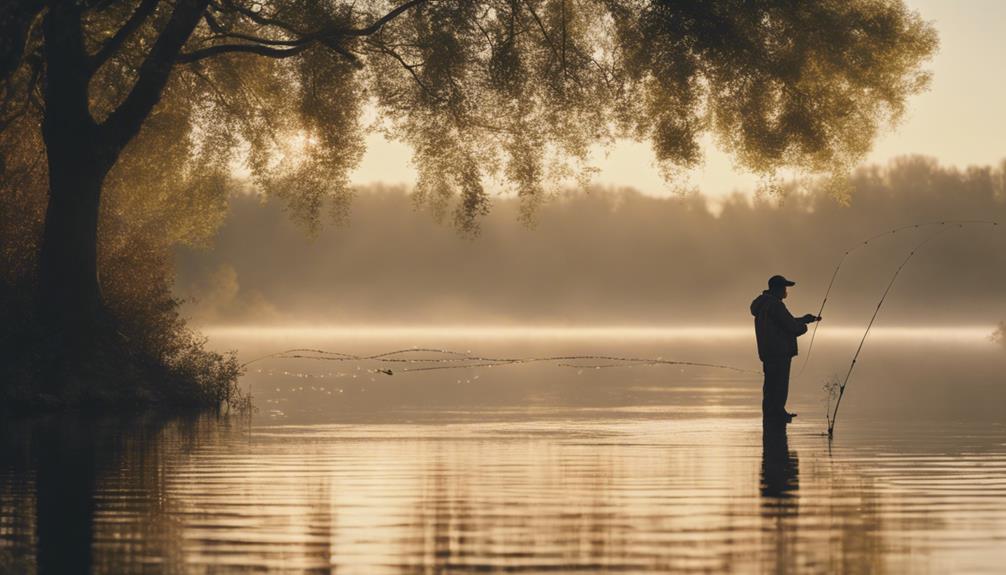1. Introduction to Fish Flies: Nature’s Marvels
When we think about aquatic life, we often envision colorful fish swimming gracefully in the water. However, lurking just above the surface, there exists a unique creature known as the fish fly. So, what is a fish fly? Fish flies, scientifically classified under the family Chaoboridae, are small, delicate insects commonly found near freshwater bodies like lakes and rivers. Although they may not be as well-known as other insects, their role in the ecosystem is significant, particularly in the aquatic food web.
2. The Life Cycle of Fish Flies: A Journey from Larvae to Adult
To fully grasp what a fish fly is, it is essential to understand its life cycle. Fish flies undergo a complete metamorphosis that includes four stages: egg, larva, pupa, and adult. The life cycle begins when adult female fish flies lay eggs on the surface of water. After hatching, the larvae, often referred to as “glass worms” due to their transparent bodies, live in the water. These larvae feed on microscopic organisms and organic matter, growing rapidly. Once they reach maturity, they enter the pupal stage, where they undergo transformation into adult flies. This process can take several weeks, depending on environmental conditions.
3. Physical Characteristics: What Do Fish Flies Look Like?
So, what does a fish fly look like? Adult fish flies are characterized by their long, slender bodies and large, membranous wings. Typically, they are grayish or transparent in color, allowing them to blend seamlessly into their surroundings. Their wings, which can span up to 2 inches, are often held vertically over their bodies when at rest. The larvae, on the other hand, possess a unique elongated shape, measuring about 1 to 2 inches in length, and are known for their glassy appearance. These physical traits not only make fish flies fascinating but also equip them to thrive in their aquatic habitats.
4. Habitat and Distribution: Where Can You Find Fish Flies?
Fish flies are predominantly found in freshwater environments, making lakes, ponds, and slow-moving rivers their primary habitats. They thrive in warm, stagnant waters rich in organic material, which provides ample food for their larvae. Regions with abundant aquatic vegetation are ideal for fish flies, as these plants serve as both shelter and a source of food. While fish flies can be found in various parts of the world, they are particularly abundant in North America, especially in areas with clean and nutrient-rich water bodies.
5. The Role of Fish Flies in the Ecosystem: Nature’s Food Source
Understanding what a fish fly is also involves recognizing its role in the ecosystem. Fish flies serve as a crucial food source for a variety of animals, including fish, birds, and other insects. Their larvae are a favorite meal for many fish species, particularly during the summer months when they are most abundant. The adult flies also contribute to the diet of birds and bats, creating a vital link in the food web. By serving as prey for these animals, fish flies play an essential role in maintaining the balance of the ecosystem.
6. Common Myths and Misconceptions About Fish Flies
Despite their ecological significance, there are several misconceptions surrounding fish flies. One common myth is that fish flies pose a threat to fish populations. In reality, fish flies are more beneficial than harmful. While their larvae may compete with small fish for food, they primarily serve as a food source for larger fish. Another misconception is that fish flies are pests. Although they can swarm in large numbers, their lifespan as adults is relatively short, usually just a few days, during which they focus on reproduction rather than causing harm.
7. Fishing with Fish Flies: A Angler’s Secret Weapon
For those who enjoy fishing, understanding what a fish fly is can significantly enhance your fishing experience. Fish flies are often used as bait, particularly in fly fishing. Anglers replicate the movements and appearance of fish flies to lure fish, especially in freshwater environments where these insects are abundant. Using fish fly patterns can be particularly effective during the evenings when adult flies are most active. Knowing how to mimic the natural behavior of fish flies can lead to a successful fishing outing.
8. Conclusion: Embracing the Unique World of Fish Flies
In conclusion, understanding what a fish fly is opens up a fascinating window into the world of these unique insects. From their remarkable life cycle to their crucial role in the ecosystem, fish flies are a testament to the complexity of nature. Whether you are an aspiring angler looking to improve your fishing techniques or simply an enthusiast of nature, appreciating the significance of fish flies can deepen your connection to the natural world. Next time you find yourself near a body of freshwater, take a moment to observe the delicate dance of these remarkable insects and their vital role in the ecosystem.
